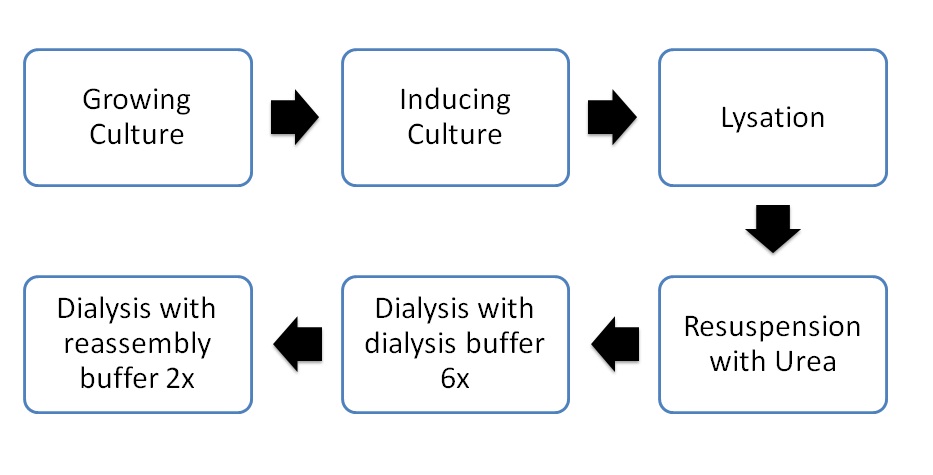Team:Wageningen UR/MethodsProduction
From 2012.igem.org
Production of VLPs
To produce our VLPs we needed a good protocol that can be used for different type of VLPs. A protocol was given to us by Richard Kormelink and was for the production of the wild type CCMV in vitro.
The protocol was designed with the apparatus and techniques of Richard Kormelink and some of them weren’t available to us. After modifying the protocol so that we are able to produce the VLPs is our lab, we were able to produce large quantities of wild type CCMV VLPs even better than the original protocol according to Jan van Lent. But we wanted more, we would like to have a standard protocol in which we can produce any VLP in vitro from any virus, without changing the protocol drastically. Our already modified protocol was already fitted for our lab, so tweaking it for each induvidual VLP we could produce multiple different types of VLPs.
The production protocol has seven major steps. The first step is to grow the E. coli cells in which the gene for the VLP-protein contains. The second step is after a few hours to induce the culture with an agent to produce our proteins. In front of our gene we put the J04500 brick, this brick contains the LacI-promoter and a RBS. This means that the promoter is IPTG inducable. 4 hours after induction we centrifuge our cells and wash them with MQ-water, so that we can store them overnight at minus 20 degree Celsius. After storage overnight we dissolve our cells in disassembly buffer and lyse the cells to get our protein into the medium. We lysed our cells with a French press, which works with high pressure to disrupt the cells. After lysation we centrifuge the disrupted cells again to pellet the cell debris in which our VLP monomers contain. After centrifugation we resuspend the pellet with disassembly buffer that contains 8M urea, this is done to denature the proteins so that the VLP monomers can fold it correctly in vitro and form it into VLPs. After treatment with urea we dialyse the solution with our VLP monomers, first we dialyse with dialysis buffer to get the urea out, this takes 6 times 4 hours to reduce the urea concentration. When the urea concentration is low enough the unfolded VLP monomers will slowly fold into the correct state. The second dialysis step is with reassembly buffer, this takes 2 times 4 hours. We reduce the pH so that the VLP monomers will fold together into a VLP.
This production process is able to produce large quantities of VLP monomers in E.coli and VLPs during the formation
in vitro. We succeeded to produce VLPs of the CCMV wild type, variations of the CCMV wild type and HepB wild type. We are close to produce another type of virus and multiple variations of CCMV and HepB.
 "
"










